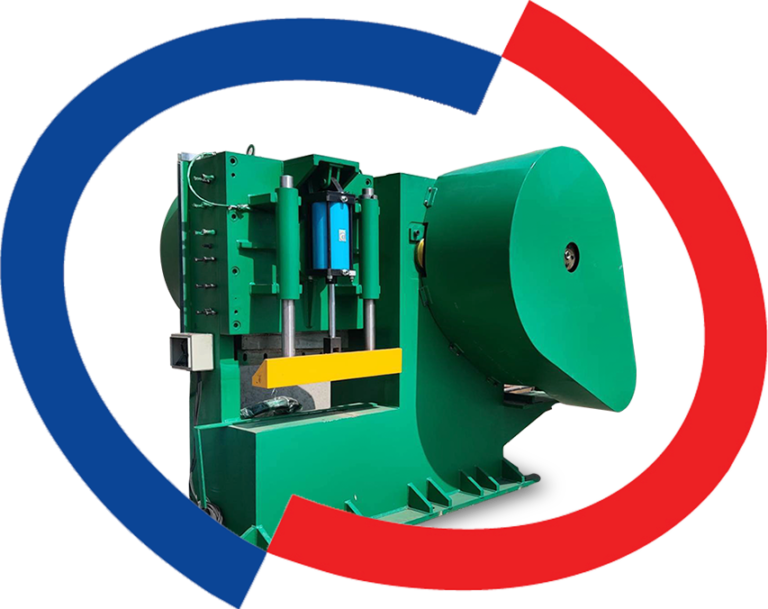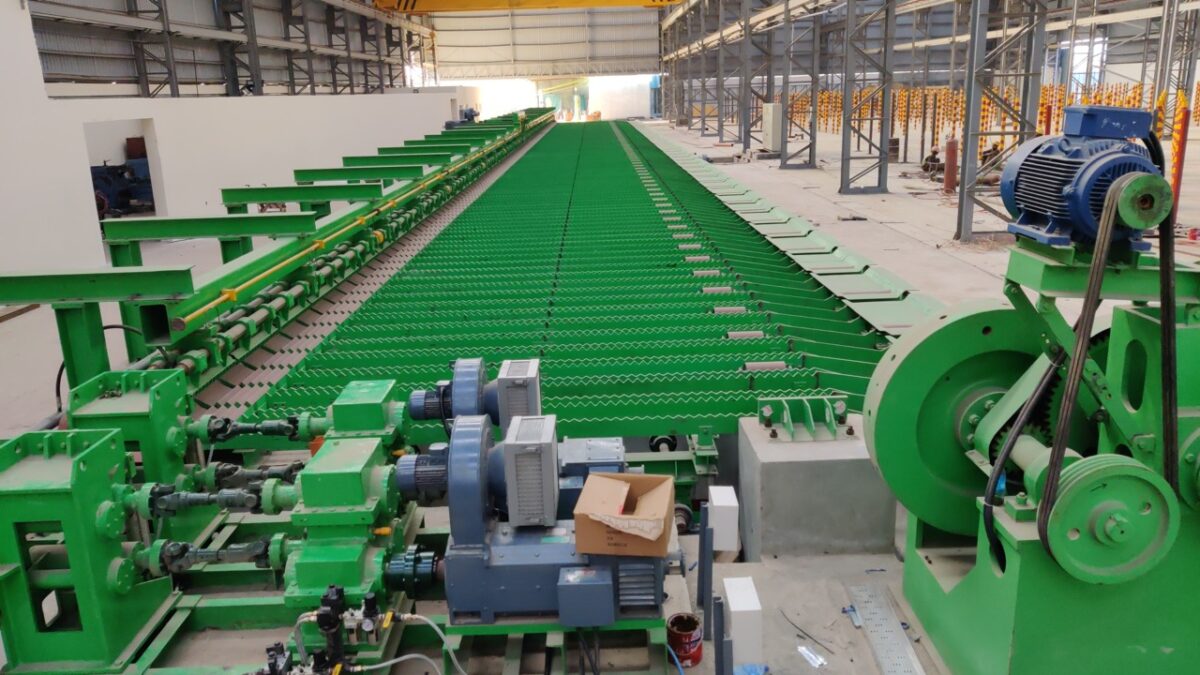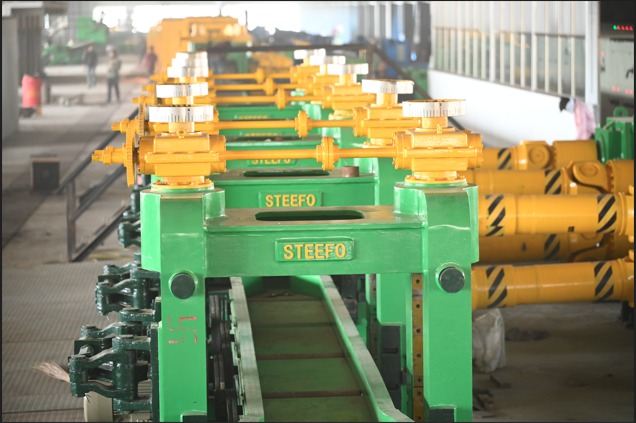In the world of hot rolling mills, shearing machines play a vital role in slicing hot metal strips into precise lengths and shapes. Their accuracy and efficiency directly affect production quality, throughput, and material yield. However, like any high-performance industrial equipment, these machines can develop issues due to wear, misalignment, operational overload, or insufficient maintenance.
When a shearing machine begins to falter—be it through inaccurate cuts, equipment jams, or loud vibrations—the entire mill operation can suffer. Downtime, material wastage, and reduced product quality aren’t just inconveniences; they translate to lost revenue and missed deadlines.
This blog dives into the most common shearing machine issues found in hot rolling mills, along with troubleshooting tips and preventive maintenance practices to help mill operators keep operations smooth and efficient.
Common Shearing Machine Issues and Solutions
1. Inconsistent Cut Lengths
Symptoms: Finished metal pieces vary in length, causing quality control issues or non-compliance with customer specs.
Possible Causes:
- Blade misalignment or dull edges
- Incorrect timing or synchronisation of the flying shear
- Improper material feed speed
- Servo or encoder errors
Potential Solutions:
- Recalibrate timing and check encoder signals for accuracy
- Inspect and replace worn or chipped shear blades
- Ensure feed rollers and conveyors are aligned and functioning correctly
- Reprogram or fine-tune the machine’s PLC for better coordination
Maintaining consistent cut lengths is crucial for downstream processing and minimising rework.
2. Increased Material Waste
Symptoms: High scrap rates, frequent edge trimming, or off-spec cut products.
Possible Causes:
- Incorrect shear settings
- Poor blade condition
- Lag in communication between drive systems and shearing control
- Inaccurate detection of entry position
Potential Solutions:
- Implement a vision-based or laser detection system for better alignment
- Conduct blade sharpening or timely replacement
- Review machine control programs for sync issues
- Train operators to optimise material feed and shear parameters
Cutting inefficiencies can quietly drain resources. Early detection of waste patterns helps curb material losses.
3. Poor Cutting Quality
Symptoms: Jagged, rough, or angled cuts; burring along the edges.
Possible Causes:
- Worn, chipped, or improperly aligned blades
- Incorrect cutting force or clearance
- Mechanical play or looseness in the shear frame
- Vibrations during cutting
Potential Solutions:
- Reset blade clearance and positioning based on material specs
- Tighten any loose mechanical components
- Upgrade to high-alloy steel blades for longer life
- Introduce vibration dampers if required
Good cutting quality enhances downstream processing efficiency, especially when preparing for coiling or stacking.
4. Machine Stalls or Jams
Symptoms: Unexpected stoppage of the shearing machine, feeding halts, or failure to retract/reposition the blades.
Possible Causes:
- Overload due to incorrect thickness or hardness of metal
- Hydraulic system failure
- Motor or drive system issues
- Software glitches
Potential Solutions:
- Check hydraulic pressure levels and fluid health
- Inspect drive belts, gears, and motors for faults
- Clear material jams manually with safety precautions
- Perform a PLC system reset or restore backup parameters
Machine jams are often a result of stress accumulation or overlooked maintenance cues.
5. Overheating and Excessive Wear
Symptoms: Machine surfaces too hot to touch, blade dulling, premature part failure.
Possible Causes:
- Inadequate cooling systems
- Excessive friction due to lack of lubrication
- Overworking the machine without scheduled pauses
- Poor ambient ventilation
Potential Solutions:
- Implement regular lubrication schedules
- Upgrade cooling units or use coolant sprays near shear zones
- Ensure environmental fans and airflow ducts are functioning
- Invest in temperature sensors to alert operators of high-heat sones
Overheating can escalate quickly into major equipment failure. Prevention is better and far cheaper than cure.
6. Vibration and Noise Issues
Symptoms: Loud screeching, clanking, or abnormal rhythmic vibration during operations.
Possible Causes:
- Worn bearings or bushings
- Unbalanced flywheels or misaligned rotating components
- Loose machine base or anchor bolts
- Blade or shaft misalignment
Potential Solutions:
- Tighten and secure all fixtures and anchoring points
- Balance the flywheel and rotating shafts
- Replace bearings and conduct routine alignment checks
- Isolate machine using vibration-dampening mounts or pads
If your shearing machine starts to sound like a rock concert, it’s time to dig deeper.
Safety Considerations During Troubleshooting
When troubleshooting a shearing machine in a hot rolling mill, safety should never be treated as an afterthought. These machines operate at high speeds, under extreme heat, and involve heavy mechanical forces. Diagnosing or repairing issues without proper precautions can lead to serious injuries, equipment damage, or both.
Ensuring Safe Operation During Diagnostics and Repairs
Before initiating any diagnostics, it’s crucial to shut down the machine completely and isolate its power supply. Always use lockout/tagout (LOTO) procedures to prevent accidental startups. Even when a machine seems idle, residual mechanical energy or pressure in the hydraulic system can pose risks.
Operators and technicians must wear personal protective equipment (PPE), including heat-resistant gloves, protective eyewear, steel-toe boots, and flame-retardant clothing. Ensure the area is well-ventilated, particularly when troubleshooting near heated components or hydraulic systems that might emit fumes.
Safety Protocols for Handling High-Temperature Materials and Machinery
Hot shearing machines may retain high temperatures long after shutdown. Use thermal sensors or infrared thermometers to verify surface temperatures before handling components. Also, be cautious of sharp sheared metal edges, which can cause lacerations if not properly managed.
If the troubleshooting involves blade inspection or replacement, verify that the cutting unit is completely stationary and cooled. Install proper guards and signage when working in shared spaces to prevent inadvertent contact by others.
Pro Tip: Maintain a well-documented Standard Operating Procedure (SOP) that includes safety checks specific to shearing machine maintenance. This will streamline safety and efficiency.
When to Seek Professional Support
While routine issues can often be resolved in-house, certain problems demand the insight and precision of a trained expert. Knowing when to call in professional support can save time, reduce downtime, and prevent costly equipment failures.
Identifying Situations That Require Expert Intervention
- Persistent electrical faults like erratic motor behavior or encoder issues
- Recurring stalls or blade alignment errors even after manual adjustments
- Hydraulic malfunctions, especially if pressure fluctuations or leaks occur
- PLC system failures or software misconfigurations that impact overall timing
- Chronic overheating despite functional cooling systems
- Mechanical vibration that worsens over time, indicating possible structural compromise
In these cases, DIY shearing machine fixes might not only be ineffective—they could worsen the issue or void warranty terms.
Benefits of Working with Experienced Technicians
Bringing in a specialist can help you pinpoint the root cause faster using advanced diagnostic tools such as vibration analysers, thermal imagers, or servo drive testers. Experts also ensure compliance with OEM specifications, especially when it comes to blade replacement, motor calibration, or hydraulic balancing.
Many machine manufacturers, including The Steefo Group, offer customised service contracts and emergency troubleshooting support. This gives operators peace of mind, knowing that a highly-trained team is just a call away when problems escalate beyond internal capabilities.
FAQs
1. What should I do if my shearing machine is producing inconsistent cut lengths in a hot rolling mill?
Start by checking the encoder of servo motor synchronisation to ensure accurate timing. Misaligned blades or worn timing belts can also cause discrepancies. Recalibrate the PLC and inspect the feed rollers for slippage. If inconsistencies persist, a service technician can run advanced diagnostics on the control system.
2. How can I reduce material waste caused by inaccurate shearing in my mill?
Focus on precision blade alignment, consistent material feed speed, and timely blade replacements. Using sensor-based systems for material detection and cut positioning can greatly reduce human error. Regular operator training also ensures that best practices are consistently followed.
3. Why is my shearing machine experiencing overheating, and how can I prevent it?
Overheating can stem from insufficient lubrication, blocked cooling vents, or prolonged continuous operation without downtime. Check oil levels, clean cooling fans, and ensure ambient airflow is not obstructed. In high-demand environments, consider installing temperature monitoring sensors that automatically shut down the machine in overheating scenarios.
4. What can I do if my shearing machine is stalling or jamming frequently during operation?
First, inspect for material jams, blade obstructions, or hydraulic leaks. Check the shear’s capacity rating and verify that the material being processed doesn’t exceed load limits. Electrical issues such as motor overloads or poor grounding can also trigger stalls. Consult the OEM or a professional technician if jams are a daily occurrence.
5. How can I identify and fix abnormal vibrations or noise from my shearing machine?
Abnormal vibrations often signal imbalanced rotating components, worn bearings, or structural loosening. Run the machine at a reduced speed and use a vibration analysis tool to isolate the source. Tighten all mounting bolts, replace faulty bearings, and realign the blade shaft. If noise persists, a technician may need to recalibrate or rebuild parts of the assembly.
By addressing the symptoms and underlying causes of common shearing machine problems, businesses can significantly improve uptime, reduce material waste, and enhance product quality.
For optimal results, combine preventive maintenance routines with smart troubleshooting protocols—and don’t hesitate to bring in the pros when things go beyond your team’s expertise.
Get Expert Consultation from The Steefo Group
Facing persistent issues with your shearing machine. Don’t let breakdowns, inconsistent cuts, or material waste disrupt your production any longer. At The Steefo Group, we specialise in tailored shearing solutions and expert support for hot rolling mills in Ahmedabad, across India, and beyond.
Our team of seasoned engineers understands the complex demands of rolling mill operations—and we’re here to help you troubleshoot, upgrade, and optimise with precision. Whether it’s onsite diagnostics, real-time virtual consultation, or preventive maintenance planning, we deliver practical, results-driven advice that keeps your mill running at peak efficiency.
With decades of experience and a deep commitment to innovation, The Steefo Group is more than a manufacturer—we’re your strategic partner in productivity.
Contact us at +91 87589 98607 for a no-obligation consultation or email us at marketing@thesteefogroup.com for product related queries and discover how we can turn your shearing machine challenges into performance wins.









